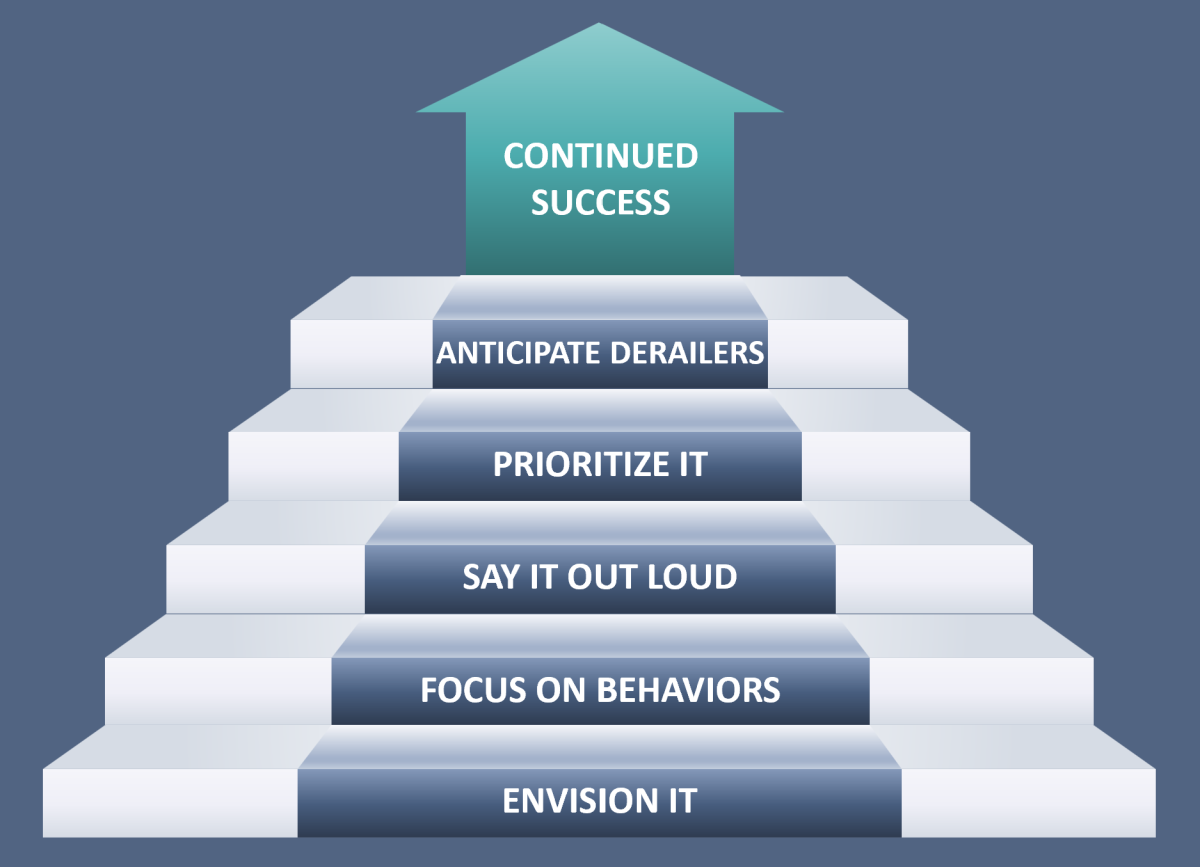With school back in session, kids and adults should be fueling their day with a…

Five Steps to Improve Your New Year’s Resolution Success Rate
In my work as a wellness coach working with clients, we envision their long-term goals and develop action plans to achieve them; no different than you creating a new year’s resolution towards your big, audacious goal. You know the one. The one you catch yourself questioning whether you can actually accomplish it. Well you can. And here you’ll find five steps from a certified wellness coach to help you do just that.
We all know the stats for people sticking with their new year’s resolutions…not good. I won’t belabor the point here. I have a “glass half full” perspective so rather than focus on the negative, let’s talk about how to be successful with your new year’s resolution this year. Here are five steps you can do to substantially improve your success rate towards your new years resolution.
- Envision it
- Focus on behaviors
- Say it out loud
- Prioritize it
- Anticipate derailers
1. Envision it.
“Any good plan starts with the end in mind” – Stephen Covey. This really is the first (and most important) step, so don’t glaze over it. How do you know what you truly want or where you want to be if you don’t invest the time to think deeply about it. “If you don’t know where you’re going, any road will take you there” – Lewis Caroll’s Alice in Wonderland. You can only be intentional with your time, money, and resources if you know where you’re going. Go deeper beyond surface statements like “I want to lose 30 pounds” or “I want to set better boundaries at work” or “I want to be more present with my kids” and imagine that you are already doing this thing consistently and you’ve become that version of yourself; it’s now an inherent part of your personality and lifestyle.
A few kickstarter questions to help you go deep:
- Answer the “so what?” If you did achieve this thing, so what? What would be possible for you?
- If you were already doing this thing consistently how would you be different than you are today?
- How would you show up differently in this world? As a partner/spouse? As a mother/father? As a sister/brother? As a friend?
It takes a specific, positive desire of the future in order to impact what you do in the present. Once you’ve thoroughly imagined this new version of yourself, it’s time to think about how you’ll get there. The above three examples (“I want to lose 30 pounds”, “I want to set better boundaries at work”, “I want to be more present with my kids”) are called outcome goals and these don’t happen by accident, it takes consistent effort, ie behavioral goals.
2. Focus on behaviors.
Once you’ve thoroughly imagined the outcome you want, think about the behaviors, habits, actions you need to consistently establish to help you reach your desired outcome. Meaning now it’s time to focus on the input not the output. The outcome (ie output) will come if the behaviors (ie input) are prioritized. And it’s ok, even encouraged, to smart small. How do you change the course of a battleship? One degree at a time.
Using the 3 statements above, the table below lists examples of behavioral goals vs outcome goals to help you develop your own behavioral goals.
| Outcome goal | Behavioral goals |
I want to lose 30 pounds |
|
I want to set better boundaries at work |
|
I want to be more present with my kids |
|
Create 3-5 realistic, sustainable behavioral goals that align with your bigger outcome goal. Once you have your behavioral goals determined, it’s time for that 14 letter word that we love to use on others but cringe when we hold the mirror up to ourselves: ACCOUNTABILITY.
3. Say it out loud.
“The relationship is imperfect; people do not always do what they say, but the act of saying it is a step toward doing it” – Stephen Rollnick & William Richard Miller
“Well I thought it to myself, Abby, does that count?” No.
“Ok, inaudibly mumbled it to myself, does that count?” Nope.
“Fine, I told my dog, does that count?” We’re getting warmer.
Use your words and say it out loud. One point for saying it in the mirror. Two points for saying it to a stranger. Three points for saying it to someone who will ask you about your progress (partner, friend, cubemate, parent, etc). Ten points for saying it to a coach ? (haha, had to throw that one in there!)
Think about who else this goal may impact and if appropriate ask them for their support. No one gets to live in a cave and work on their goals, so you may need to ask for help, support, and/or resources from others. Verbalizing what you’re trying to accomplish and how they can help you get there will reinforce your commitment to the goal.
Saying it is one thing, but doing it is another. Time to put it in action.
4. Prioritize it.
Starting something is easy but finishing it requires commitment, fortitude, and a bunch of other strengths that I bet you have leaned on before in the achievement of your biggest successes in life so far.
This step is a two-parter. First, you have to honor this commitment to yourself. If you don’t, no one will. Second, others need to know how important this goal is to you and that may mean asking for help and establishing boundaries that allow you to prioritize the goal. There are several ways to prioritize time for your goal and only you know what will work best for you, but usually the number one tactic I hear from clients is to physically put in on their calendars. Visually blocking out a specific time and it staring back at you when you look at your calendar each day is a trick that works for many of us. It may need to be more than one calendar as well. Example – if you’re needing your partner’s support to watch the kids after work three times per week so that you can dedicate time to your goal, maybe that means putting it on your partner’s calendar as well.
So once you’ve envisioned your big, audacious goal, created behavioral goals, said them out loud, and put them on the calendar it’s smooth sailing from there, right? Yes! You’re all done! Bahaha, just kidding. Life happens. Which brings us to step five.
5. Anticipate Derailers.
Life happens. Sometimes our best intentions are thwarted by circumstances outside of our control. Which is why anticipating what these possible derailers could be and creating a plan B is so important to maintain your positive momentum and not throw you completely off track. This is a good lesson for those who have an “all or nothing” mentality; something is better than nothing. 6,000 steps is better than 2,000 steps. 30 minutes uninterrupted time with your kids is better than 5 minutes. A 10 minute walk over lunch is better than a no minutes.
A one-time event (to be fair, a handful of times) is one thing, but if you start to consistently misstep, it might be time to reevaluate one or all of the behavioral goals and slightly modify them. I didn’t say avert them completely; I didn’t say start all over completely; I’m saying maybe they just need a slight adjustment. This happens all the time with my coaching clients. In one session they’ve committed to doing something and when we meet again they confess that they didn’t make any progress towards it. Guess what? That is completely ok and they’re not alone. There’s no judgment from me and I invite them to let go of any judgments of themselves. Together, we approach their behavioral goals as experiments. This mindset shift usually helps people embrace the notion that it’s not “trial and error” but rather it’s “trial and learning.” There are important insights in learning what simply doesn’t work for you. We take these insights and slightly adjust their original behavioral goals that they then usually meet with much higher success rates the second time around.
In summary
“Nothing happens or comes to be without a thought first” – Jen Sincero. I know you want this big goal for yourself. You wouldn’t still be reading if that weren’t the truth! And I have a hunch that this goal would impact more than just you: yes, it might impact how confidently you show up in this world, but it would also positively impact the relationships around you, your career, and your higher purpose. I wish you all luck, resources, and blessings to make this goal happen for yourself. The world needs you to achieve this thing and whether you know it or not, your story will influence and inspire someone else.
If you’d like some additional support in flushing out this big, audacious goal from a wellness coach, please reach out! I offer free initial consults so that you can experience the power of wellness coaching and how it might be utilized as a tool to help you reach your goals.


